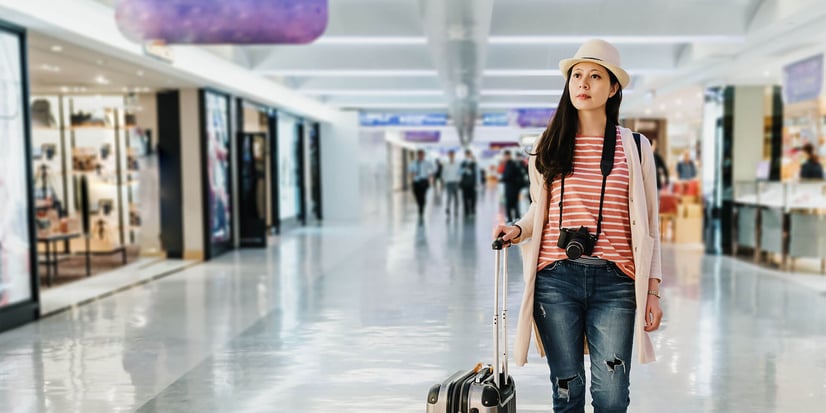The 4 top trends influencing the travel retail industry

Travel retailers can expect a surge in sales, as projected by Fortune Business Insights. The global duty-free retail market is expected to reach $78.78 billion by 2032, with a CAGR of 6.76%. Despite this positive outlook, attracting travelers and encouraging purchases remains challenging, as only 5-10% of travelers at international airports visit duty-free outlets. Retailers must develop strategies to draw in and engage passengers, providing a distinctive and convenient shopping experience regardless of currency or language.
Here are four key travel shopping trends shaping the industry and suggestions on how to capitalize on these opportunities to enhance your retail strategy:
1. Engage the digitally-savvy passenger
Airports, airlines, cruise lines, and ferry terminals have transformed into data-rich hubs, utilizing a variety of digital touchpoints to streamline check-in and boarding processes. Simultaneously, travelers rely on technology to simplify their journeys. According to SITA, 98% of airline passengers carry at least one mobile device, with 70% carrying two or more. Retailers embracing this digital shift can create a seamless shopping experience that attracts and engages passengers throughout their travels.
How to integrate technology in your travel retail strategy:
- Unified digital platforms: Ensure a cohesive experience by connecting mobile apps, websites, and in-store technology using a unified software system. Enable online purchases with in-store pickup options.
- Loyalty programs: Develop loyalty programs with targeted offers accessible on mobile devices, redeemable across all stores.
- Data-driven personalization: Partner with travel operators to access booking and check-in data, enabling personalized offers and recommendations.
- Social media engagement: Use social media to create tailored offers and encourage in-store check-ins.
2. Adapt to changing shopping habits
Millennials and Gen Z travelers have different shopping habits compared to older generations. Millennials shop to spend time, buy gifts, or indulge themselves, while Gen Z is influenced by social media and prefers personalized, tech-forward experiences. Both generations seek unique experiences and great value.
How to cater to Gen Z and Millennial travelers:
- Multi-channel engagement: Connect with travelers via mobile apps, social media, and in-store digital displays.
- Personalized deals: Offer location-based deals and personalized recommendations.
- Unique in-store experiences: Implement pop-up shops and special promotions to attract travelers.
- Travel-specific offers: Use flight information to tailor offers based on the passenger’s destination and departure time.
3. Optimize checkout processes
Travelers expect seamless and efficient processes during check-in, baggage handling, and boarding, and they anticipate a similar experience when making purchases. However, various languages, currencies, tax rates, and regulations can complicate the checkout process.
How to optimize the checkout experience:
- Multiple payment options: Provide simple checkout options via mobile apps, online stores, self-serve kiosks, or mobile POS systems.
- Currency flexibility: Allow travelers to check prices and pay in any currency or combination of currencies.
- Unified retail software: Use an all-in-one platform that consolidates POS, inventory, and tax management. Ensure efficient capture of passport and boarding pass information for accurate tax calculations.
- Language support: Offer support for multiple languages throughout the store and at checkout.
4. Stock the right products
Balancing stock to match travelers' tastes is crucial. Retailers must avoid running out of stock while also not overstocking in busy terminals or on ferries. Understanding what sells well to different passenger groups in various locations is essential.
How to optimize stock management:
- Business Intelligence tools: Analyze sales data to understand shopping patterns and see how different passenger groups respond to promotions.
- Automated stock ordering: Use average sales and stock levels to automate orders, ensuring popular products are always available.
- Traveler data collection: Use apps, loyalty programs, and online interactions to gather data on travelers’ preferences.
- Specialized software: Ensure your retail software is tailored to duty-free and travel retail, providing real-time tax calculation, compliance management, and personalization algorithms.
With the right technology and digital strategy, duty-free and travel retail stores can thrive, offering a seamless travel experience that keeps customers engaged and satisfied.
Interested in learning how the right retail software can boost sales in your duty-free or travel retail stores? Contact us to discover how LS Central can help you reach your business goals.

